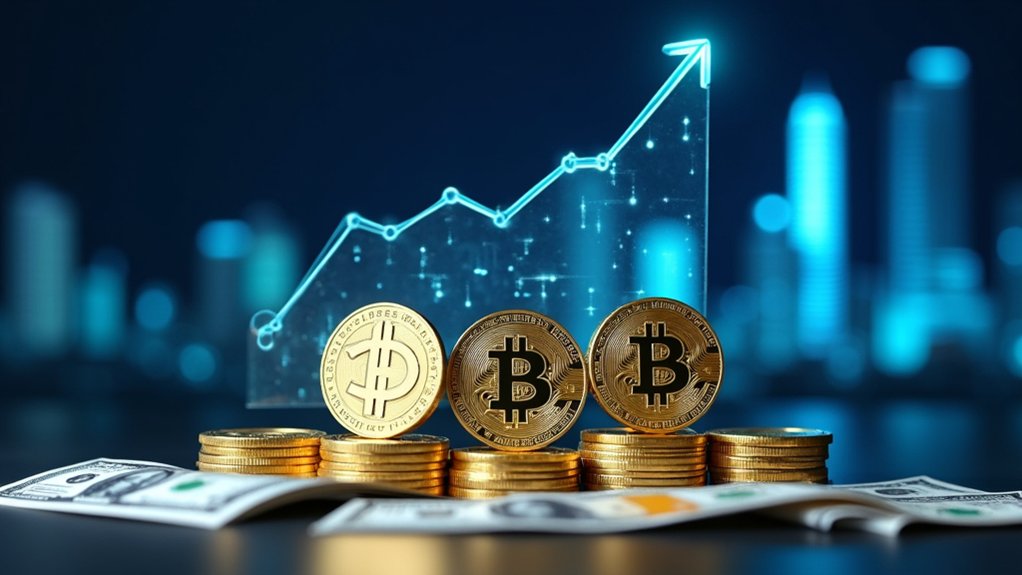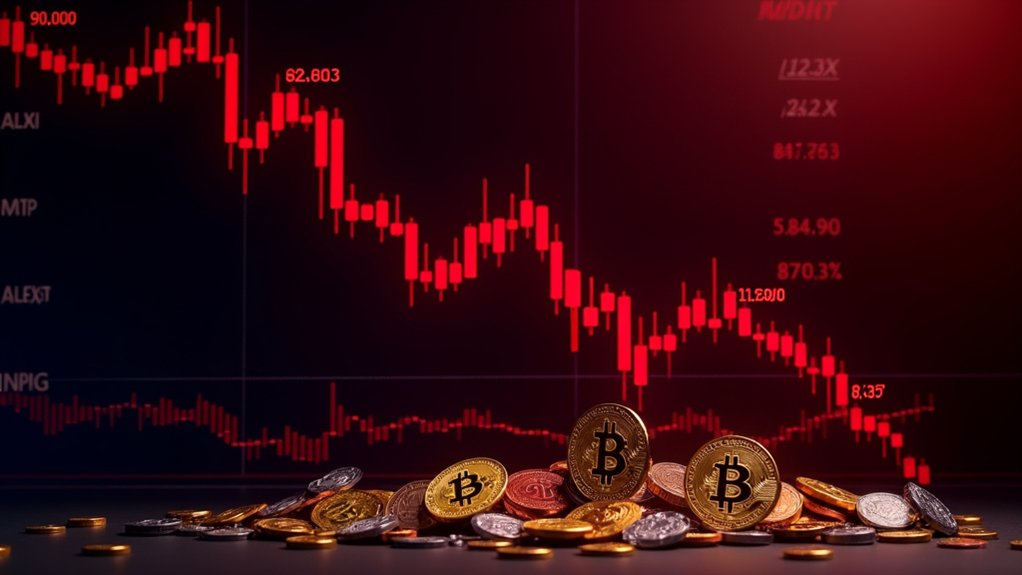While traditional banking executives continue their polite dismissals, stablecoins have quietly exploded into a $225 billion market force. The numbers don’t lie—57% growth in 2024 alone, with transaction volume sailing past $4.7 trillion in just 30 days. That’s not spare change. Analysts now project a $400 billion valuation by 2025, and the banking elite are starting to sweat.
The integration with traditional finance is happening faster than anyone expected. Major banks that once scoffed at crypto are now scrambling to issue their own stablecoins by late 2025. Even Stripe jumped on the bandwagon, acquiring Bridge. Fortune 500 companies aren’t waiting around either. The two-tiered banking system is adapting, reluctantly but inevitably.
The banking elite once mocked crypto—now they’re racing to launch their own stablecoins before they’re left behind.
It’s not just crypto bros using these digital dollars anymore. In emerging markets, 47% of participants use stablecoins as dollar savings—a digital mattress for their money. Cross-border transactions, remittances, efficient currency conversion—the use cases keep multiplying. When markets go haywire, more people are grabbing stablecoins instead of traditional safe havens. These digital assets handled an impressive $10.8 trillion in global transactions in 2023 alone.
Regulators have finally woken up. The EU’s MiCA regulation set the stage, while the US is playing catch-up with stablecoin legislation. Even the Financial Stability Board is proposing global standards. Funny how 20+ US states are now exploring Bitcoin reserves. Amazing what a little market disruption can do.
Banks are terrified, and for good reason. Stablecoins threaten their credit intermediation monopoly and traditional funding methods. The competition for deposits and payment services is heating up. Welcome to capitalism, bankers.
Technology keeps pushing forward too. Layer-2 protocols, blockchain interoperability, enhanced security—it’s evolving rapidly. Smart contracts are turning money into programmable assets. The flexibility of stablecoins means they can represent various assets beyond just the dollar, potentially redefining currency characteristics in the digital economy. The elimination of hidden costs and delays associated with legacy banking systems makes stablecoins vastly superior for modern financial needs.
The global implications are massive. Dollar access in restricted countries, inflation hedging in developing economies, reshaping of financial power dynamics. The old guard can keep dismissing it. The rest of us will watch as $400 billion speaks for itself.





